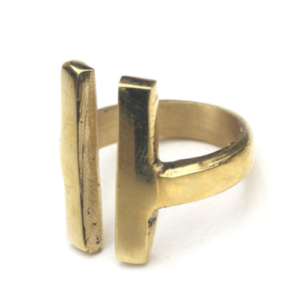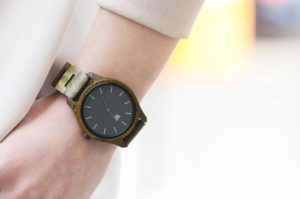By Meera Raval and Kasi Martin
Every day the climate crisis looms, it becomes more apparent that nature-based solutions are the only way forward. We need less interference and more listening. (We have two ears and one mouth, after all.)
It’s easy, however, for this approach to feel stuck in the past. The argument that we should all be gardening and handmaking clothes doesn’t work for everyone. And since we’re all about sustainable solutions at scale here, the idea of circularity excites us.
Circularity is rooted in the wisdom of natural systems but designed for the modern world. By modern, we don’t mean a spin on the dominant consumption economy. Rather, if done correctly, circularity will enable us to transform the economy entirely, producing the right amount of goods with far less harm to the planet.
Here’s what you need to know about circularity and how to implement it in your wardrobe.
What is circularity?
Most garments and consumer goods have a cradle-to-grave life cycle. In this linear cycle, garments are produced, worn, and thrown out at the end of their life, which comes sooner with today’s fast fashion cycles. These garments may take centuries to degrade and often contain inorganic materials polluting water and soil. Learn more here.
In a cradle-to-cradle cycle, the end of a garment’s life cycle is the beginning of a new product. If made from entirely organic materials, it will biodegrade into biological nutrients that can be used to grow new materials from which new products can be made. If made from technical nutrients, it will be “upcycled” into something new.
Upcycling is key because it means the garment won’t lose fiber quality, which happens today when garments are recycled or, more likely, “downcycled” into insulation or shoddy. Typically, clothes can be downcycled once and then go to a landfill. Upcycling would keep them in use longer, ideally forever, and out of landfills.
The origins of cradle-to-cradle
While the phrase “cradle-to-cradle” or “C2C” was introduced in the 1970s, the current model is based on a system initiated in the 1990s by Michael Braungart, a chemist and former Greenpeace activist, and his colleagues at the Environmental Protection Encouragement Agency (EPEA). Braungart and William McDonough, an American architect, then popularized the idea with the publication of their book, Cradle to Cradle: Remaking the Way We Make Things (a Peahen bookshelf mainstay).
Today, their non-profit, the Cradle to Cradle Products Innovation Institute, advances a circular economy, which calls for a total restructuring of the GDP-centric economy. A circular economy is biomimetic and models human industry of natural processes and design.
The Institue evaluates and certifies products as meeting cradle-to-cradle standards based on how sustainable and non-toxic the materials used to make them are, how easily they can be recycled, how much of the production process uses renewable energy, responsible water management, and socially responsible production methods.
How fashion brands approach circularity
Today about 100 apparel businesses (chemical companies, thread and trim producers, yarn and fabric mills, brands, and retailers) have Cradle to Cradle Certified products. This helps guarantee circular design on a product level. While this doesn’t represent a large cross-section of the industry, many brands approach circularity independently or through industry commitments.
For example, in 2020, the nonprofit Fashion Revolution USA launched a Circular Fashion Pledge to encourage more small and medium-sized enterprises in the textile and apparel supply chain to take steps toward creating a more circular industry.
Luxury to mainstream
Some prominent designers and clothing manufacturers have committed to creating circular products. Stella McCartney is one such luxury designer. Many of her products are made with renewable materials, and she was one of the first designers to partner with plant-based vegan leather companies like Bolt Threads, ensuring her leathers will biodegrade, unlike conventional PU or PVC.
Of course, we can’t go without mentioning Patagonia. While we believe the outdoor retailer could make more strides by using natural fibers like wool instead of polyester, it has made progress with its Common Threads Garment Recycling Program. The brand focuses on designing quality gear, keeping it in play, and repairing and reselling it as best as possible.
Activewear brand Girlfriend Collective collects used leggings and turns them into new pieces. Eileen Fisher was a forerunner in takeback programs, launching first with its employees. The brand cleans and resells gently used garments or turns damaged items into limited edition designs or home décor. To date, it’s the only program that takes back 100 percent of its garments, despite their condition.
Girlfriend Collective also offers store credit in exchange for used clothing, but it discourages overconsumption by offering high-quality products designed to last. Take-back programs with discounts at fast-fashion giants, like H&M, which launched its Garment Collecting program in 2013, encourage more cheaply-made fashion and perpetuate the cycle of overproduction. Be cautious of these programs, because they’re likely a guise to drive sales of new products.
How greenwashing infiltrates circular fashion
Greenwashing is a deceptive marketing tactic used to make a company seem like it’s sustainable with recognizable, but often vague, buzzwords. While take-back programs can be part of a circular fashion cycle, it all depends on how the clothes were designed, their quality, and their expected longevity.
Some things to consider when assessing a brand’s circularity claims include: looking at the materials used (are they natural?), evaluating the brand’s reputation for quality (read reviews or check Good on You or Ecostylist), weighing if the discounts negate the program’s intent, and asking about other environmental strategies. Cirucality is one piece of sustainability, not the whole puzzle.
Is your wardrobe circular?
You know how to tell if a brand is circular, but how about your clothes? Here are three steps to help:
Step 1:
Ask whether the materials in your clothing contain biological or technical nutrients. Biological nutrients (100% natural materials), like cotton and wool, can be returned to the earth to nourish new life. Technical nutrients, like polyester and nylon, can be recycled into new textile products but ONLY if they are 100% of one material. We don’t currently have the technology to recycle blends (the most common is poly-cotton). And there’s also the colossal issue of microplastic shedding with technical materials. So we say opt for natural as much as possible.
Step 2:
Consider the durability of your clothes. Are they made to last, or did you buy them to wear them only a few times? Quality clothes mean less waste over time. Before buying, you should pull the fabric to see if it’s tough, assess seam quality, and consider how and where you will wear the garment.
Step 3:
Think about care and end-of-life. Check out our guide on care. Then ask yourself, what will you do with this garment when you’re done with it? Can you envision it staying in style long enough for someone else to love? Do you attend, or could you host a local-style swap? Does your city have a local textile recycling program? Other ways to keep clothes in the cycle longer include plant dying them if they’re stained, donating them to a building company for insulation, or using them as cleaning rags instead of paper towels. We opt for all of these instead of taking them to a thrift store, where only a fraction of donated goods get resold (most go to a landfill).
How do you plan to make sure your wardrobe is more circular? Let us know in the comments below.
Where to learn more about circularity
Building a circular economy and supporting more cradle-to-cradle products is vital to make the apparel industry more sustainable.
For a more in-depth look at how circular economies and production processes function, here are some recommended resources:
Books
- Circular Supply Chain: 17 Common Questions by Deborah Dull
- Circular Fashion: A Supply Chain for Sustainability in the Textile Apparel Industry by Peggy Blum
- Cradle to Cradle: Remaking the Way We Make Things by William McDonough.
Podcasts
- Wardrobe Crisis: Fashion journalist Clare Press interviews a wide swath of ethical fashion experts for her engaging, sustainable fashion podcast.
- Conscious Chatter: The host, Kestrel Jenkins, seeks to “reimagine the narrative around sustainability” and “deconstruct how oppressive systems impact the sustainable fashion space.”
- Soil to Soil by Fibreshed: Fibershed is a nonprofit advocating for natural fiber systems and a regenerative fashion future.
Blogs
- The Peahen
- Adimay
- Conscious Fashion Collective
Youtube
Curious to learn more? Follow us on Instagram for more content on circularity.




